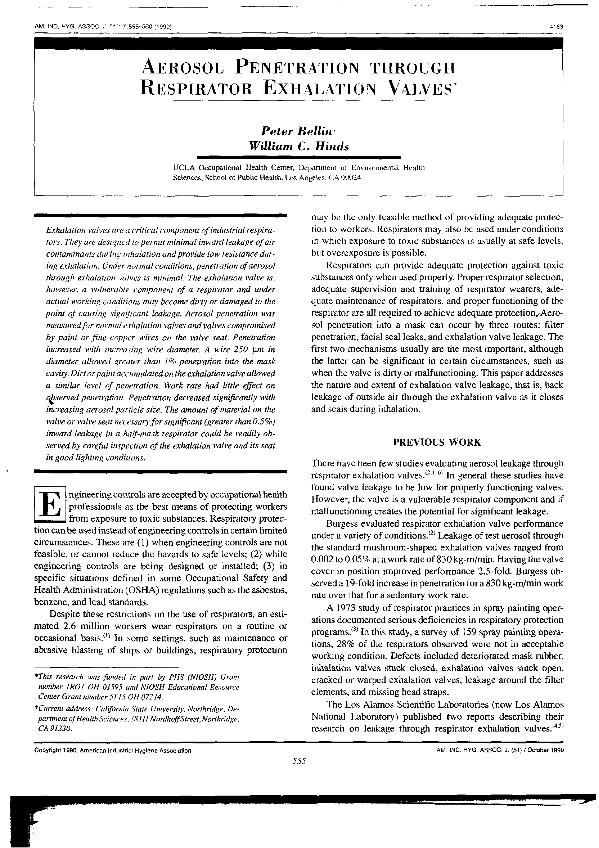Aerosol penetration through respirator exhalation valves

Contenido multimedia no disponible por derechos de autor o por acceso restringido. Contacte con la institución para más información.
| Tag | 1 | 2 | Valor |
|---|---|---|---|
| LDR | 00000nab a2200000 i 4500 | ||
| 001 | MAP20071020351 | ||
| 003 | MAP | ||
| 005 | 20080418120204.0 | ||
| 007 | hzruuu---uuuu | ||
| 008 | 940706e19901001usa|||| | |00010|eng d | ||
| 035 | $a6800013563 | ||
| 040 | $aMAP$bspa | ||
| 084 | $a872 | ||
| 100 | 1 | $0MAPA20080062293$aBellin, Peter | |
| 245 | 1 | 0 | $aAerosol penetration through respirator exhalation valves$cPeter Bellin, William C. Hinds |
| 520 | $aAerosol penetration into a mask can occur by three routes: filter penetration, facial seal leaks, and exhalation valve leakage. The first two mechanisms usually are the most important, although the latter can be significant in certain circumstances, such as when the valve is dirty or malfunctioning. This paper adressess the nature and extent of exhalation valve leakage, that is, back leakage of outside air through the exhalation valve as it closes and seals during inhalation | ||
| 650 | 1 | 1 | $0MAPA20080585679$aHigiene industrial |
| 650 | 1 | 1 | $0MAPA20080605278$aContaminantes químicos |
| 650 | 1 | 1 | $0MAPA20080625054$aSustancias tóxicas y peligrosas |
| 650 | 1 | 1 | $0MAPA20080549534$aAerosoles |
| 650 | 1 | 1 | $0MAPA20080554859$aInhalación |
| 650 | 1 | 1 | $0MAPA20080548094$aMáscaras |
| 650 | 1 | 1 | $0MAPA20080601393$aEquipos respiratorios |
| 650 | 1 | 1 | $0MAPA20080549305$aVálvulas |
| 700 | 1 | $0MAPA20080194666$aHinds, William C. | |
| 740 | 0 | $aAmerican Industrial Hygiene Association journal | |
| 773 | 0 | $tAmerican Industrial Hygiene Association journal$dAkron, Ohio$gVol. 51, nº 10, October 1990 ; p. 555-560 |

